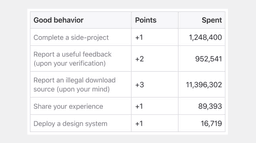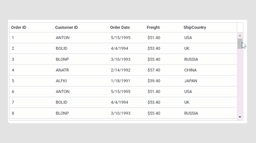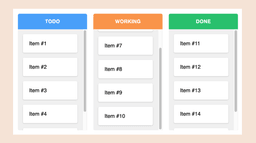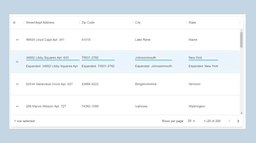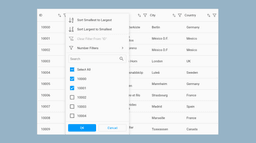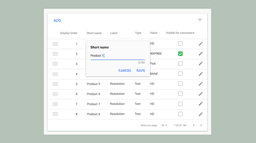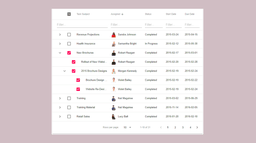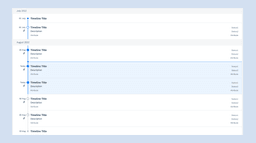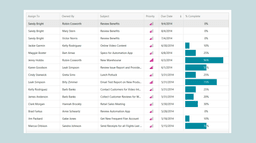Dec 29, 2023
10 Best data grid designs shaping UI UX trends
Inspirations• Aakash Jethwani• 11 Mins reading time
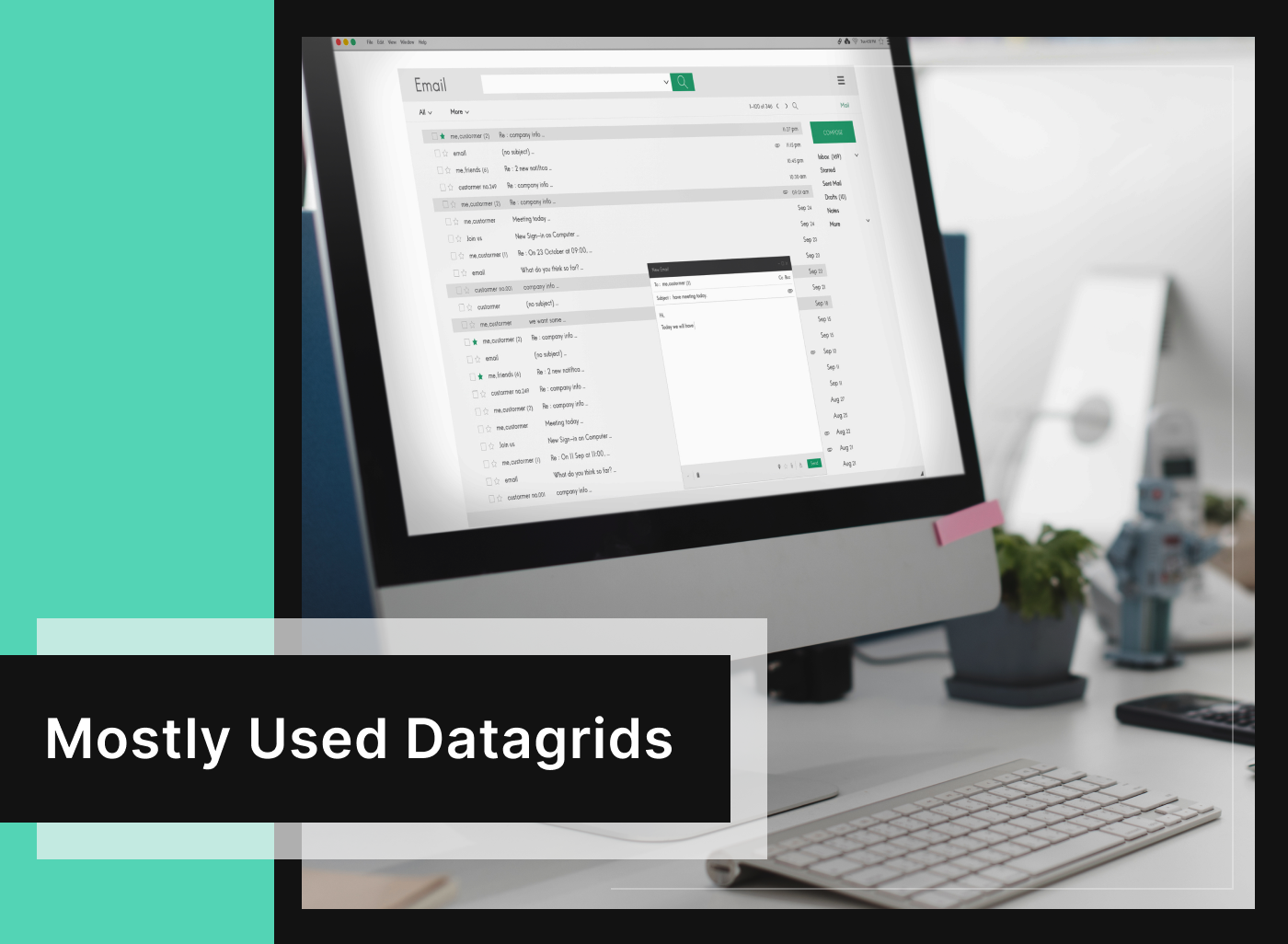
In today’s digital landscape, where information is the currency of user interaction, the role of datagrids in UI/UX design is more critical than ever. As we navigate the intricacies of modern digital experiences, the choice of a datagrid becomes a strategic decision for designers aiming to strike a delicate balance between functionality, aesthetics, and user engagement. This blog sets out to unravel the intricacies of UI/UX design by delving into the realm of datagrids, spotlighting the ten most widely embraced solutions that have reshaped the way we perceive and interact with data.
The sheer diversity of user interfaces in contemporary applications demands a nuanced understanding of the strengths and applications of various datagrids. From classic table structures that offer familiarity and ease of navigation to advanced graphical datagrids that transform data into visual narratives, each design choice brings a unique set of capabilities to the user experience palette. These datagrids not only facilitate the efficient organization of data but also play a crucial role in influencing how users comprehend, interpret, and act upon the information at their fingertips.
In the competitive digital landscape, where countless options are available to users, businesses and developers must prioritise UI/UX to stand out and retain users. A user-friendly design not only reduces bounce rates but also fosters brand loyalty, with satisfied users more likely to recommend and revisit a platform.
As we embark on this exploration, we’ll dissect the features, functionalities, and user-centric philosophies that distinguish each datagrid, revealing the design considerations that have earned them a spot among the most utilized in the field.
By understanding the nuances of these datagrids, UI/UX designers can gain valuable insights into optimizing data representation, fostering user engagement, and ultimately crafting digital experiences that seamlessly integrate form and function. Join us on this journey through the vibrant landscape of UI/UX design as we unveil the power and potential encapsulated in the ten mostly used datagrids that continue to shape the digital interfaces of today and tomorrow.
1. Classic table datagrid
The “Classic Table Datagrid” is a conventional UI design displaying structured data in rows and columns, offering a familiar and organized presentation. Each row represents a data entry, and each column signifies a specific attribute. This format is simple, widely recognized, and ideal for applications where users are accustomed to spreadsheet-like layouts, facilitating efficient data navigation and interpretation.
When we use
The “Classic Table Datagrid” is ideal for presenting structured data in a familiar and organized manner, especially for users accustomed to traditional tables like those in spreadsheet applications. It excels in scenarios requiring efficient data comparison and scanning, enabling users to identify patterns across rows and columns.
Its consistent layout across devices makes it practical for seamless experiences across different screen sizes. This format is particularly effective for data entries with uniform attributes, ensuring clarity and ease of interpretation for users.
2. Card-based datagrid
The “Card-Based Datagrid” is a UI design that presents data entries as individual cards, incorporating text, images, and other details for a visually engaging and interactive display. This format is ideal for applications where a dynamic and visually rich presentation of information is desired, offering a departure from traditional tabular layouts.
When we use
The “Card-Based Datagrid” is widely used in visually-driven platforms like Amazon. Instead of traditional tables, it employs individual cards to showcase products, featuring text, images, and interactive elements. This design enhances user experience with a visually engaging and easily scannable display, ideal for scenarios emphasizing product discovery.
Particularly effective for content-heavy datasets, the card-based datagrid enables seamless interaction and navigation, enhancing user engagement on platforms like Amazon.
3. Infinite scroll datagrid
The “Infinite Scroll Datagrid” is a UI design that enables continuous scrolling through content without the need for pagination. Popular in platforms like Facebook and Instagram, this approach automatically loads new data as users scroll down, offering a seamless and uninterrupted browsing experience for large datasets.
When we use
It’s Widely applied on social media platforms such as Instagram and Twitter, the infinite scroll datagrid employs a dynamic loading mechanism, continuously fetching additional data as users scroll. Ideal for large datasets, this design ensures a smooth and uninterrupted browsing experience.
Removing traditional pagination enhances user engagement, simplifying navigation for effortless exploration of extensive content. Best suited for platforms requiring a constant content flow, the infinite scroll datagrid promotes a user-friendly and immersive interaction with data.
4. Drag-and-drop grid
A “Drag-and-Drop Grid” in UI design enables users to intuitively rearrange elements within a grid or table by dragging and dropping them to new positions. This dynamic functionality enhances user interactivity, providing a personalized and flexible experience, especially useful in applications like project management tools or content management systems where prioritizing and categorizing information is key.
When we use
The “Drag-and-Drop Grid” enhances user control and personalization in applications like project management tools, task boards, and content management systems. This design provides an intuitive and dynamic way for users to organize and manipulate data within a grid or table, allowing flexibility in arranging elements according to preferences or workflow.
Platforms such as Trello and Jira leverage this user-friendly interactivity, enabling seamless task rearrangement by dragging and dropping.
In essence, the Drag-and-Drop Grid is a key component of the user experience, empowering users with fluid organization and rearrangement of data elements.
5. Collapsible datagrid
A “Collapsible Datagrid” is a UI design that lets users expand or collapse sections of the data grid, optimizing screen space and allowing for a personalized view of information. It’s ideal for managing large datasets and provides a streamlined user experience by reducing visual clutter.
When we use
We use a ‘Collapsible Datagrid’ to optimize screen space and enhance user customization in viewing information. It’s beneficial when dealing with large datasets or when users need to focus on specific details while minimizing visual clutter.
Platforms like project management tools (e.g., Trello), document management systems, and e-commerce websites often employ collapsible datagrids to provide users with a more organized and tailored experience.
6. Filterable grid
A “Filterable Grid” is a UI design allowing users to apply filters to displayed data, selectively showing or hiding information based on specific criteria. Ideal for large datasets, this design enhances user interaction by offering a personalized and efficient experience, enabling users to focus on relevant information and tailor their view to specific requirements.
When we use
The “Filterable Grid” streamlines data analysis, allowing users to selectively view information based on specific criteria. Ideal for handling large datasets, this design empowers users to focus on relevant subsets for efficient analysis.
Commonly used in project management tools, inventory systems, and data dashboards, it enhances user experience in applications like Microsoft Excel, providing robust filtering options, and platforms such as Jira and Trello, enabling users to organize and view data according to their preferences.
The Filterable Grid is a practical solution for optimizing data visibility and usability in applications where organized data analysis is crucial.
7. Editable datagrid
An “Editable Datagrid” empowers users to modify data directly within the grid or table, facilitating real-time changes such as text editing, value updates, or new entries. This interactive feature streamlines the user experience by eliminating the need for separate editing interfaces. Particularly valuable in applications requiring frequent and immediate data modifications, this design enhances efficiency and user immediacy in tasks like data entry and updates.
When we use
The “Editable Datagrid” enables users to edit, update, or add information directly within the grid, streamlining real-time data interaction. Ideal for collaborative data entry and quick corrections, it eliminates the need for separate editing interfaces.
Notable platforms, such as Microsoft Excel and Asana, incorporate this design, enhancing user efficiency in applications where dynamic data interaction is crucial.
8. Hierarchical datagrid
The “Hierarchical Grid” is a UI design organizing data in nested structures within a grid or table. Rows can be expanded or collapsed to reveal related information, creating a hierarchy. Ideal for data with parent-child relationships or tree-like structures, this design enables users to drill down into specific details while maintaining an organized and visually clear representation of the overall data hierarchy.
When we use
The “Hierarchical Datagrid” is designed for efficient representation and navigation of complex datasets with parent-child relationships. Ideal for presenting information in a nested, tree-like format, this design enables users to expand or collapse rows to reveal or hide related data levels.
It proves valuable in applications dealing with organizational charts, project hierarchies, or file structures. Notable platforms, including Jira for task management and file explorers like Windows Explorer or macOS Finder, leverage this design to enhance user experience.
The Hierarchical Datagrid offers an organized and efficient way for users to explore intricate datasets with clear hierarchical relationships.
9. Timeline datagrid
A “Timeline Grid” organizes data chronologically within a table, deviating from the traditional tabular format. Rows represent specific timeframes, and columns signify attributes or data points associated with each time entry. Ideal for showcasing temporal relationships or historical data, this design offers a visual representation, aiding users in understanding the chronological progression of events or activities.
When we use
The “Timeline Datagrid” is ideal for chronologically organizing and presenting data, especially in applications where the temporal sequence is crucial. It proves beneficial for visualizing historical data, project timelines, and any information unfolding over time.
Platforms such as Trello utilize the Timeline Datagrid, enabling users to view and interact with project tasks along a timeline for a clear historical perspective. Similarly, applications like Airtable leverage this datagrid for mapping out events and milestones over specified periods.
In essence, the Timeline Datagrid is a valuable tool for applications requiring a chronological representation of events, offering users a visual perspective on the sequence of activities.
10. Graphical datagrid
A “Graphical Datagrid” integrates visual elements like charts and graphs into the traditional tabular structure, enhancing data presentation with visual insights. Each cell in the grid may contain graphical representations to convey data points, trends, or patterns. This design is valuable when dealing with complex information, providing a more engaging and informative user experience by combining the structure of a classic table with the visual impact of graphs.
When we use
The “Graphical Datagrid” merges tabular data with visual elements like charts, offering a dynamic approach to data presentation. This design is essential for scenarios where quick insights and trend analysis are paramount, often seen in analytics and business intelligence.
Platforms like Microsoft Excel, Tableau, and Google Sheets leverage this approach, allowing users to seamlessly integrate graphical representations with traditional tables for a more engaging user experience.
Conclusion
As we conclude our journey through the diverse world of UI/UX datagrids, it’s evident that these design elements are pivotal in shaping digital interactions. From the simplicity of tables to the dynamic nature of drag-and-drop functionalities and timeline perspectives, each datagrid choice significantly influences how users engage with data. The key takeaway is that selecting a datagrid is a strategic decision, impacting not just the technical aspects but the overall user experience.
Understanding the strengths of each datagrid empowers designers to create digital experiences that seamlessly blend form and function. As we reflect on the best datagrids in UI/UX, it’s clear that the future lies in designs where data isn’t just presented but is an integral, interactive part of the user journey. Cheers to the datagrids shaping today’s digital landscapes and the evolving innovations that will redefine tomorrow’s experiences.
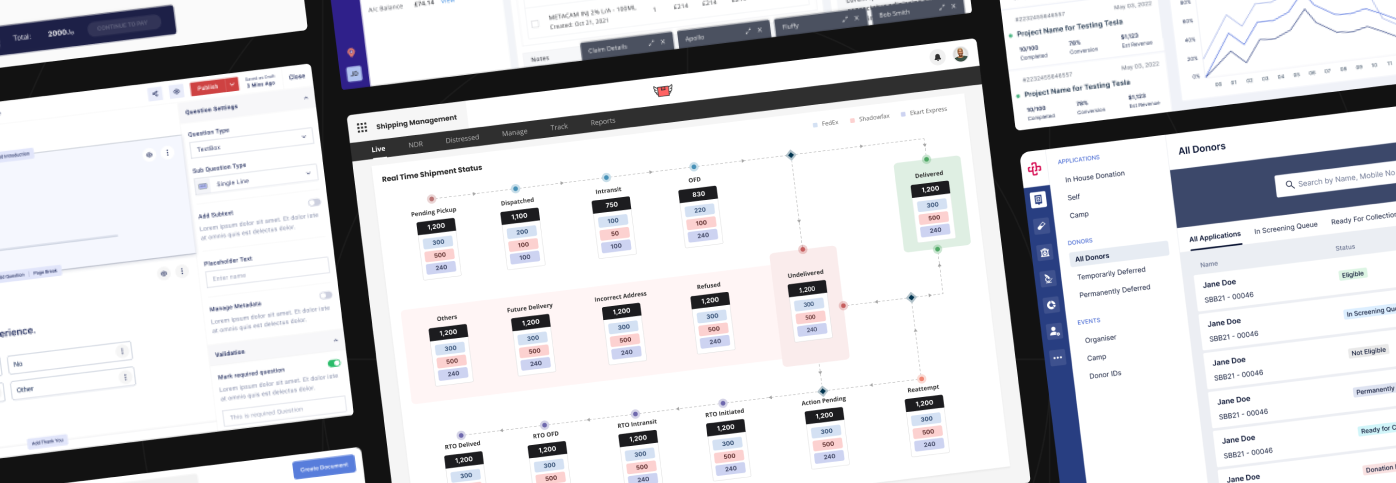
Ready to turn user engagement into a memorable journey?
Contact UsSubscribe to
blogs
Related Blogs
Benefits of UI UX design: How it transforms user experience
Reading Time: 9 minutes In the dynamic world of digital interactions, UI/UX design stands as the backbone of creating meaningful and seamless experiences for users. Whether you’re a seasoned designer or just stepping into the realm of UI/UX, understanding the advantages of UI/UX Design and benefits of user experience design can significantly impact your approach to crafting interfaces that […]
Dec 28, 2023 • By Aakash Jethwani

Essential UI UX design tips for outstanding UX experiences
Reading Time: 9 minutes In the rapidly changing digital landscape, UI/UX Design holds unparalleled importance. Its significance lies in crafting experiences that resonate with users, ensuring their satisfaction and loyalty. A meticulously designed UI/UX becomes a secret weapon in the competitive tech space, setting a product apart from the crowd. Beyond aesthetics, it plays a pivotal role in increasing […]
Dec 27, 2023 • By Aakash Jethwani


